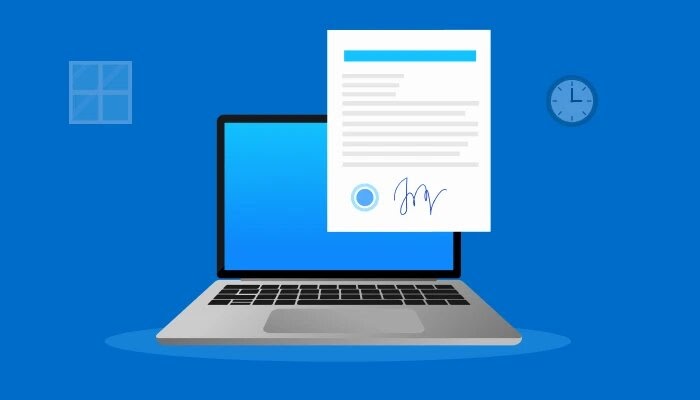On the one hand, it’s critical to act quickly when your company’s conditions are favourable. On the other hand, the sooner you get started, the sooner you’ll start reaping the benefits and learning how to succeed in business. While there may be a lot of pressure to move rapidly, it’s also necessary to consider organisational headwinds, other large initiatives that are consuming resources, or a company-wide focus on other priorities. It might be wiser to hold off till the weather improves.
Another possibility is to begin small. Start by deploying a small portion of the contracting solution that will take little time and effort to implement. Although it may not be transformative, deploying in fewer sections can help you achieve immediate results as well as long-term impact. Regardless of how you choose to deploy the contracting technology, identifying the best moment to do so is critical to your success.
When Is It Appropriate to Deal with Contracting Technology?
When deciding when to install contracting technology, keep the following aspects in mind:
Company’s Need
Is there a compelling need for such a solution? Is there any compulsion to digitally execute contracts/agreements? Is your company having trouble due to a contract issue?
Company’s Situation
Do you have the internal resources to handle this kind of project? Do you have the necessary funds? Is this something that requires executive or other team leader support??
Expected Impact
Would modernised contracting make a difference in achieving your department’s or company’s objectives? If you’re executing a lot of contracts every month, there’s regulation involved, your contracts are high value, or the contract itself or how it’s handled is complex, among other factors, the impact will be greater.
After considering the above questions, you should have a better idea of where your company stands right now, how to succeed in business, and the impact of modern contracting technology. If there is a pressing requirement that could affect a wide range of departments, now is the time to act. If you don’t have enough internal bandwidth to commit to a transformation of that magnitude, it’s probably preferable to hold off until you’re more certain. Before deciding on the schedule and scope of your next contracting project, think about everything.
Deployment Timing Methodologies

When it comes to deployment scheduling, there are two options. Let’s take a closer look at them.
1. The San Diego Zoo – From Small Beginnings to Giant Steps In Zoo, becoming paperless has been identified as one of their key priorities. However, because this was just one among several, the Zoo didn’t have the resources to adopt it widely. While the impact would be enormous, it would have no effect on revenue or customer experience, making this project less important than others.
Nonetheless, Zoo executives wanted to start the paperless transformation, and they believed that the HR department would be a good location to start. One of the worst paper offenders was the HR department, which had 87 cartons of paper files on hand.
The choice was taken to use e-signature software for their employment and onboarding process, which allowed them to digitise their existing paper, save papers, and automate the signing procedure for future agreements. After achieving success, the team is now trying to digitise other processes and build on their HR foundation to present a compelling argument.
2. GoCardless, on the other hand, launched its new contracting option with a bang. For large-scale implementation, the UK-based IT and services organisation met the following conditions.:
There was a pressing requirement: Salespeople were drafting contracts in Word, which resulted in mistakes.
The circumstances were ideal: At the time, there were few other technological projects, and contracting improvements were a top priority.
The ramifications would be enormous: It was focused on increasing revenue as a startup, and reducing sales contracts would have an immediate impact on its bottom line.
To improve sales and boost efficiency, the company implemented a Contract Lifecycle Management (CLM) technology. Sales reps can now leverage information from their CRM and particular terms from a legal-approved library to construct a personalized sales contract with the click of a button. In addition, the organisation created a workflow that automates contract approval across multiple departments and levels.
The new contract solution isn’t only for sales; it’s utilised as a standard in recruitment, procurement, sales, legal, and management across the company.
As a result, GoCardless was able to save numerous legal hours while also receiving additional insight through its unified contract database. Its consumers discovered that the new contracting procedure made their lives easier because they received a customized contract fast, we’re able to conclude negotiations in a transparent manner, and was able to close transactions electronically.
When it comes to sales contracts, be sure the deployment time is right.
It’s usually a good idea to get high-return projects off the ground, but you must balance your needs with your company’s unique circumstances. Take your time to consider the timing of the project and only begin it when you have a solid foundation (business need) and the resources (company situation) to devote to a project that the company appreciates (expected impact). You’ll be on your way to success if you do that.
With a detailed checklist, walk through the most crucial questions to help you evaluate contracting technology for your firm.
Summary
Organizations that are about to adapt to or are in the early stages of implementing digital signatures have a formidable weapon at their disposal. It follows a set of encryption standards with the security bit key, such as 32-bit key, 64-bit key, 128-bit key, and so on, because it is produced using a mathematical technique. When a file/application/document is compromised, decrypting the key takes a long time as the bit-key encryption count grows.
Decrypting a 64-bit encrypted key, for example, can take years. Even if the hacker began testing it, the entire sharing procedure or operation will be accomplished in the meanwhile. As a result, if you’ve customized the digital signature method, there’s no need to be concerned about key compromise. Surprisingly, many successful entrepreneurs have stated that they achieved their goals after applying the digital signing concept, and it is also one of the little profitable company ideas that can be readily adapted and implemented.”
